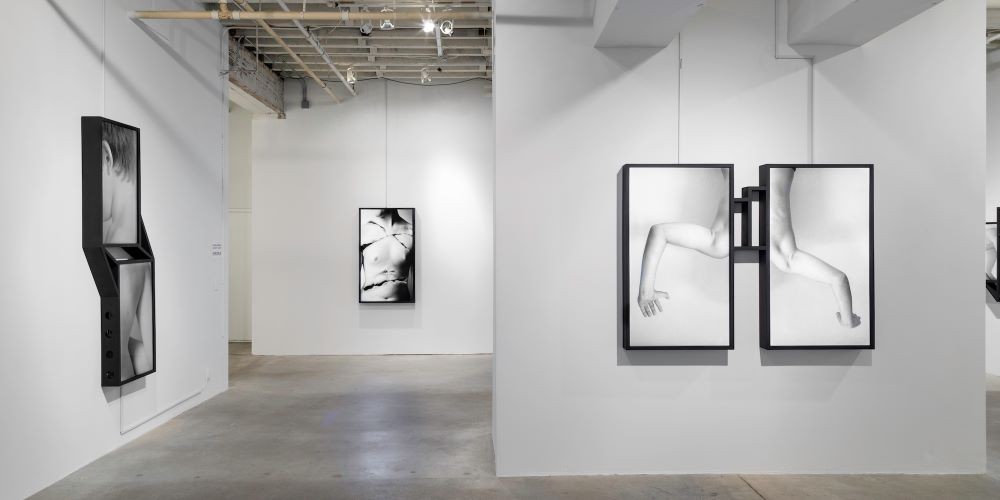Alumna Maria Antelman '11 in Solo Exhibit 'Soft Interface'
New work from Visual Arts Alumna Maria Antelman ‘11 is currently on exhibition at the Bemis Center for Contemporary Arts. Antelman’s exhibition, entitled Soft Interface will be on view at the Bemis through April 24, 2021 and is one of three solo exhibitions curated under the rubric of “Intimate Actions” by Rachel Adams, Bemis Center Chief Curator and Director of Programs.
Born in Athens, Greece, Antelman is a visual artist based in New York. She works mainly with 35mm film photography and she holds an MFA in New Genres from Columbia University. Recent exhibitions include Companion Pieces: New Photography 2020 at The Museum of Modern Art in New York; Mechanisms of Affection (solo) at the VAC, UT Austin (2019); and Disassembler (solo) at Pioneer Works, Brooklyn (2018). Antelman also has work featured in the Yerevan Biennial’s ongoing digital exhibition, The Time Complex. She has been awarded production grants from the Onassis Foundation USA, the National Museum of Contemporary Art, Athens, and the J.F. Costopoulos Foundation.
Antelman recently joined Adams as part of the Bemis' ongoing remote public programming series, “Between Two Screens,” to talk more about the exhibition. “With references to classical sculpture and archeology, Maria Antelman’s work in Soft Interface acknowledges the line between permanence and impermanence. Intimately photographing herself and her family and then splicing these with imagery from the natural landscape–referencing bodies as historic sculptures–Antelman intertwines the human form (humanity) with the porous stones of the earth. Creating formal connections through diagrammatic framing techniques, Antelman’s photographs, and closed loops (gifs) are transformative.”

The exhibition often pairs and offsets separate images in a way that creates a new kind of unity. This can be seen in a piece such as “Puzzles,” in which photographs of Antelman’s own body are positioned alongside photographs of her son in a way that melds the two, as Adams noted. Antelman, who called into the event from Greece and has been spending much of quarantine with her family, says the decision to work with her family and children was an instinctive one. “Suddenly, instead of looking at the world around me, I started taking pictures of these bodies who live with me, who are part of me. At that time, I was thinking again about ancient Greek mythology, and the god Pan, the god of wilderness, who is half human and half animal. I was thinking how when you have children and they grow up, and you look at them, you see your past self in them, and you also see them, and yourself, in the future. It’s a very strange reflection.” For Antelman, these elements of future and past exist simultaneously throughout her work.
Amidst this exhibition is, notably, Antelman’s first self portrait. When she began working with her children, Antelman realized that it was the closest she had ever come to creating a self portrait and decided it was time to turn the camera on herself as well. Antelman discussed how the piece allowed her to explore the anxieties that come with leaving traces of yourself online, in every search and click, and how they are gathered and reconstructed by systems in a strange and unseen way. “That’s how the title of the piece came along—'Self Stranger'—what do they see, and what do they take of me?”
Commenting on the larger rubric of “Intimate Actions,” Adams noted how during the pandemic, we’re all experiencing a new type of intimacy. Antelman spoke about the intersection of intimacy with her own work: “It is very interesting to me, how intimacy works through technology. Intimacy is about closeness, and technology is about distance, and technology facilitates the closeness that brings about intimacy...We can choose what to show and what to hide about ourselves.” Antelman is also compelled by how texture is communicated through the screen. “Skin feels so different when you see it through the screen. It feels like this cyborg bodice, it feels like it’s a layer or clothing, not real skin, which is also so interesting to me.”
Watch the recording of the complete talk on the Bemis Center’s website, and check out Antelman’s site to learn more about her past, current, and upcoming exhibitions.

